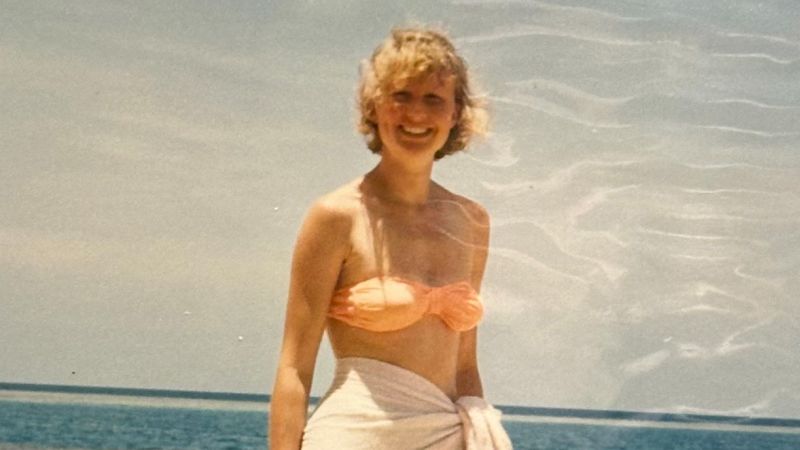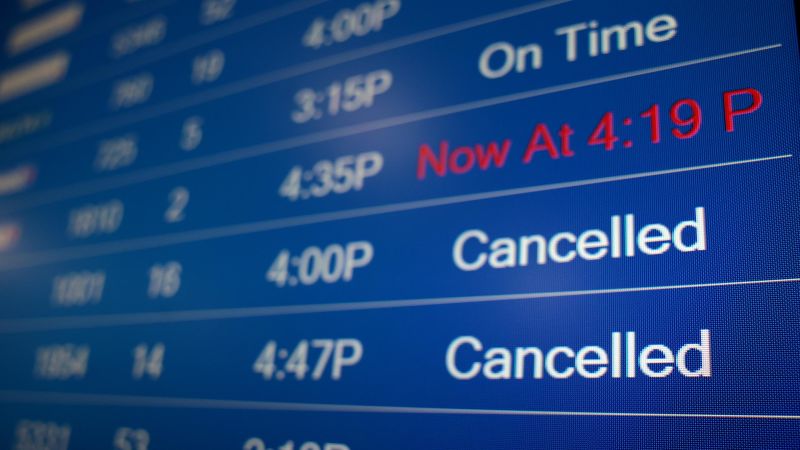CNN
—
On a typical day, British photographer Rosie Lugg and her mother, Hayley Champion, spend almost every moment together.
“My mum is pretty much my best friend,” Lugg tells CNN Travel. “We’ll have breakfast together. We go to the gym together. We go for walks together. Just chat about pretty much anything and everything.”
So when 22-year-old Lugg started planning a three-month travel adventure to Southeast Asia — her first long-haul trip with her boyfriend — she immediately shared the travel ideas with Champion.
In turn, Lugg’s mother started sharing memories of her time in Thailand and Malaysia, where she worked for a period back in the mid-1990s. Champion had a bunch of photos from her time there, she told her daughter, buried in a box somewhere.
Lugg encouraged her to hunt out the shots: she was interested partly as a photographer, and partly because she loved the idea of getting a glimpse into her mother’s younger years and her parents’ love story. She knew her mother and father met in the 1990s, while teaching scuba diving in Malaysia, but not much else about their time there.
“So mum took me through all of her film photos that she has in the attic — boxes and boxes of film photos,” recalls Lugg.
The prints were taken on a Olympus mju, a small silver film camera that first went on sale in 1991 and which Champion carried in her bag through most of the ensuing decade.
This compact point-and-shoot has had a bit of a renaissance on eBay in recent years, thanks to its Instagram-ready aesthetic. But Lugg fell in love with her mothers’ Olympus mju pictures not only because of the way they captured the light and their grainy vibrancy.
More than anything, she just loved seeing her mother in her early 20s, smiling into the camera, eating dumplings, exploring markets and walking on sandy beaches. It was a wonderful insight into her mother’s life and travels three decades prior.
What also struck both women, that day in the attic, was their striking mother-daughter resemblance. Lugg and Champion two knew they looked alike, but in these pictures it was undeniable.
“I get told I look like her now, but it’s when I look at pictures of her when she was my age that it’s really obvious,” says Lugg.
In many of her mother’s 1990s Southeast Asia shots, “it was like looking at a picture of myself, which is so bizarre,” says Lugg.
As she thumbed through the prints, marveling at the physical similarities (“even the way we stand…”) an idea started brewing in Lugg’s mind. She turned to her mother:
“It would be really cool if I could recreate these photos,” she said.
This idea was cemented when Champion discovered she still had that Olympus mju, even though she’d long retired it in favor of her iPhone and it was “full of sand, on its way out,” as Lugg puts it.
So Lugg stuffed the 30-year-old Olympus into her backpack and boarded her flight to Thailand.
Lugg arrived in Southeast Asia armed with the vintage camera, pictures of her mother’s photos saved on a phone and no plan beyond seeing where the project — and her travels — would take her. She began her trip in Indonesia, intending to explore Singapore, Malaysia, Thailand, Vietnam and the Philippines.
Lugg didn’t have the exact locations of Champion’s 1990s photos (“she can’t remember a lot of them because we didn’t have Google Maps pins at the time,” Lugg explains). So instead of attempting to find the exact spots where the original photos were taken, Lugg decided just to look out for places that reminded her of the places in the mother’s photos.
She wanted to worry less about the specifics and more about capturing a similar moment in time.
Take, for example, one of the 1990s pictures where Champion is captured walking away from the camera on an empty, sandy beach.
Champion thinks this picture was taken on the Thai island of Ko Phi Phi Don. Three decades later, Lugg found herself sitting on Selong Beach in Lombok, Indonesia, looking out at the horizon. She noticed the coastline was a similar shape to that in her mother’s photo. While Ko Phi Phi Don is some 2,600 kilometers (1,615 miles) away from Lombok, Lugg felt there was an aesthetic similarity that was worth capturing. The sky was similarly blue. She also felt the relaxed happiness that the original photo seemed to capture.
Lugg quickly set up the shot in the “exact right position” then passed the Olympus camera to her boyfriend (“he’s very good at being a human tripod,” she laughs). Then she started walking away from the camera, just like her mother in the 1990s shot.
The nature of film photography meant Lugg couldn’t overthink the result — her reel of film only had 36 pictures. Her boyfriend couldn’t snap dozens of options. He had to press the shutter button and hope for the best.
“Every single picture, we only did one try,” says Lugg, who adds this limitation was also part of the simplicity of her recreated picture project: “I really wanted it to be just that memory captured as it is.”
The Olympus camera offered none of the instant gratification of a smartphone, Lugg had to wait until the film was developed to see the results. She knew there was a chance they might be “out of focus or blurry” but embracing this unknown was part of the fun.
“That’s the magic of film,” says Lugg. “The fact that you can’t look back at the pictures instantly, and you have to look forward to getting them developed to see how it came out.”
Later in her trip, while in the Philippines and Vietnam, Lugg got a few of her rolls of film developed and got her first glimpse at her recreations. She was delighted with the results, and immediately messaged some of the pictures home to her mother in the UK.
“It was really fun getting them whilst we were still traveling, and then obviously being able to send them home whilst we’re still there, like little postcards,” says Lugg.
Her mother loved seeing the pictures, says Lugg. The familial resemblance had never been more apparent. Paired together, it was often hard to tell if the photo was of Lugg or Champion, taken in 1994 or 2024.
“It was really fun to recreate them and see how similar we actually are,” says Lugg.
Recreating the photos also helped Lugg in the moments when she missed her mother — given how close they are, it was “a really strange feeling, going away for such an extended amount of time.”
“It was the longest time I would have been away from her, and we were both very aware of it,” Lugg adds. “But this was such a fun way to feel even more connected to her. Recreating memories that she’d had felt a lot like being close to her.”
Once she was back home in the UK, Lugg spent long evenings swapping stories with her mother, and comparing their respective photos.
“They’re not the exact same locations. They’re not the exact same experiences,” stresses Lugg. “But they’re really similar, and when you see them, physically in front of you, side by side, that’s a really cool feeling.”
She’s since shared the photographs on her social media, where she posts her photography projects @rambosphotos. Lugg is also considering framing the pictures, side-by-side.
At some point on Lugg’s trip, her mother’s Olympus mju camera finally broke. Lugg’s glad it lasted for so long, but she wasn’t quite ready to say goodbye to it just yet. Now she uses another new-old Olympus mju, purchased on eBay, and is excited for future travel adventures and future photo recreations.
In the meantime, Lugg, now 23, is enjoying being back in the UK, sharing pictures, stories and memories with her mother.
She feels closer to Champion than ever, even after spending a few months on the opposite side of the world.
“It tells you more about who they are,” she says of looking at her parents’ old photos and hearing their travel stories.
“I feel like every child will get this with their parents when it’s a huge realization that they had a life before you. And it’s such a strange feeling. The more stories they tell, the more I’m like, ‘Wow, you really did a lot before I was here.’”






























